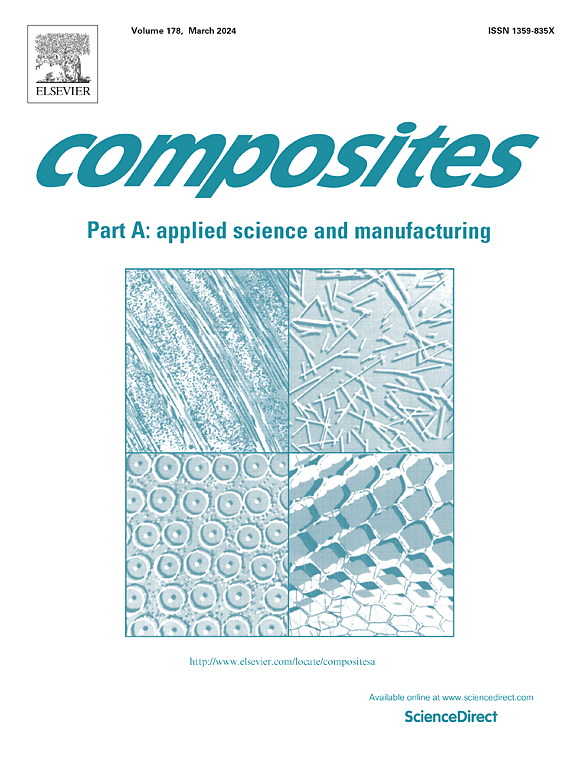Interface reaction and properties of carbon nanotubes-aluminum composites
IF 8.1
2区 材料科学
Q1 ENGINEERING, MANUFACTURING
Composites Part A: Applied Science and Manufacturing
Pub Date : 2025-04-14
DOI:10.1016/j.compositesa.2025.108949
引用次数: 0
Abstract
Carbon nanotubes/aluminum (CNTs/Al) composites have great potentials due to their light weight, outstanding mechanical and electrical properties. It is easy to enhance the mechanical strength of the CNTs/Al composites, but very difficult to improve the electrical properties. Here, CNTs/Al composites are prepared by powder metallurgy (PM) and friction stir processing (FSP) followed by hot press, respectively. The interface reaction between CNTs and Al inside the composites are investigated. Some new hexagonal compounds consist of Al, C and some O are frequently detected in the CNTs/Al composites. The atomic ratio of Al to C in these compounds deviates from 4:3, indicates that there might be some non-Al4C3 phase aluminum carbide in the composites. Atomic diffusion between C and Al matrix are observed in the composite prepared by FSP and hot press under high pressure, which also results in some hexagonal compounds. The CNTs/Al-FSP composite containing ∼4 wt.% CNTs prepared by FSP combined with hot press behave a superior electrical conductivity of 38.4 MS/m, which is slightly higher than that of the commercial pure Al (AA 1060). The tensile strength and total elongation of CNTs/Al-FSP composite had improved by 28.7% and 15.3% compared with AA 1060, which is attributed to tightly bonded CNTs/Al interface.
求助全文
约1分钟内获得全文
求助全文
来源期刊

Composites Part A: Applied Science and Manufacturing
工程技术-材料科学:复合
CiteScore
15.20
自引率
5.70%
发文量
492
审稿时长
30 days
期刊介绍:
Composites Part A: Applied Science and Manufacturing is a comprehensive journal that publishes original research papers, review articles, case studies, short communications, and letters covering various aspects of composite materials science and technology. This includes fibrous and particulate reinforcements in polymeric, metallic, and ceramic matrices, as well as 'natural' composites like wood and biological materials. The journal addresses topics such as properties, design, and manufacture of reinforcing fibers and particles, novel architectures and concepts, multifunctional composites, advancements in fabrication and processing, manufacturing science, process modeling, experimental mechanics, microstructural characterization, interfaces, prediction and measurement of mechanical, physical, and chemical behavior, and performance in service. Additionally, articles on economic and commercial aspects, design, and case studies are welcomed. All submissions undergo rigorous peer review to ensure they contribute significantly and innovatively, maintaining high standards for content and presentation. The editorial team aims to expedite the review process for prompt publication.
 求助内容:
求助内容: 应助结果提醒方式:
应助结果提醒方式:


